Photos: Spiders feast on deadly snakes
Spiders taking down and feasting on snakes is more common than researchers thought. Scientists have found more than 300 reported cases of 30 spider species preying on dozens of species of snakes. Some of these snakes are hundreds of times heavier than the arachnid preying on them, researchers found. Here's a look at some of the gruesome spider-on-snake feasting. The research, and photos, come from the following publication: Martin Nyffeler and J. Whitfield Gibbons (2021). Spiders (Arachnida: Araneae) feeding on snakes (Reptilia: Squamata). Journal of Arachnology 49, 1-27.
Black widow enjoys a snack
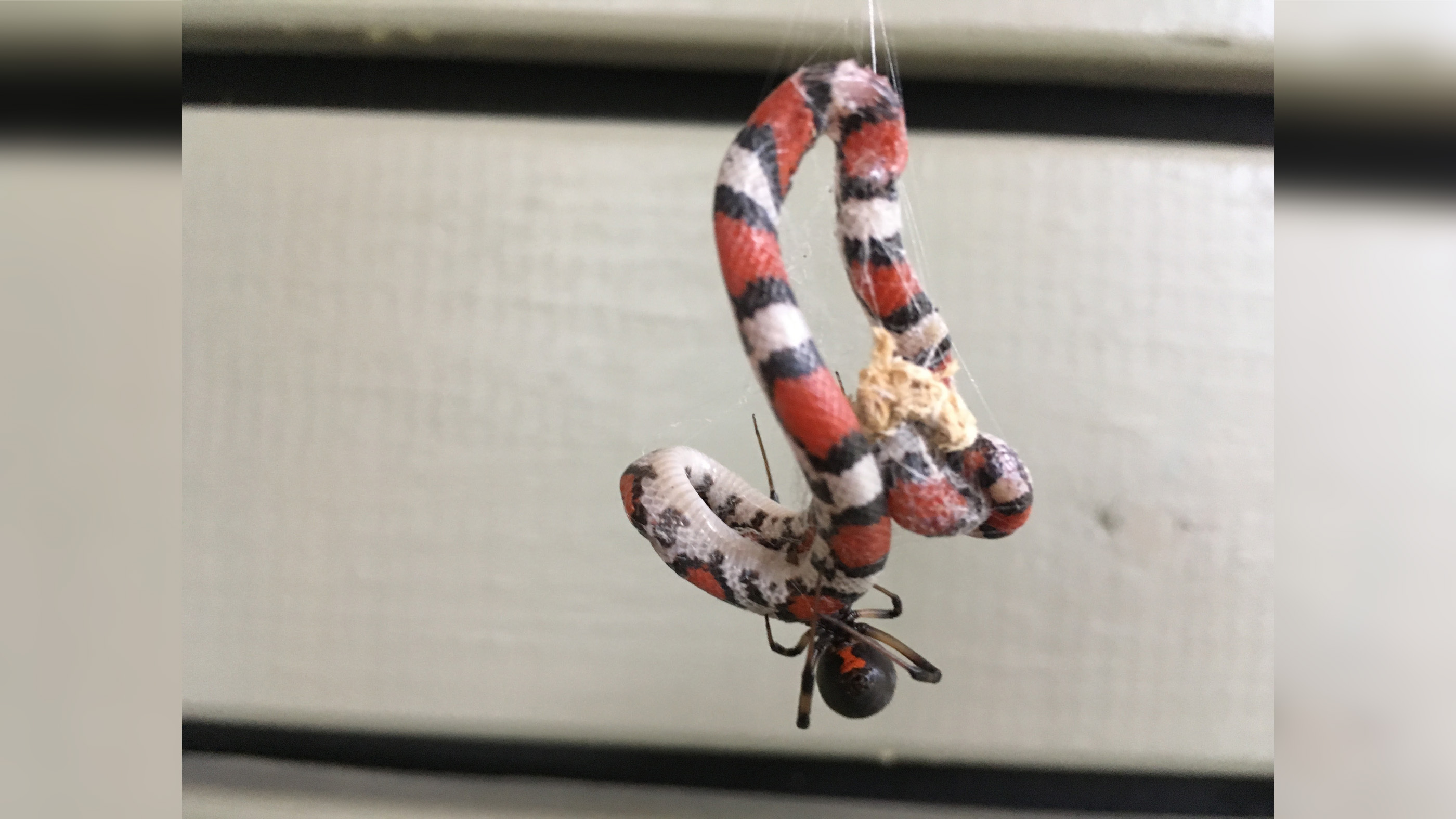
A black widow spider (Latrodectus geometricus) enjoys a meal of juvenile scarlet snake (Cemophora coccinea) in Georgia. Black widow venom contains a toxin called α-latrotoxin, which targets the nervous system of vertebrates, allowing these spiders to kill prey many times their size.
Eyelash viper gets trapped
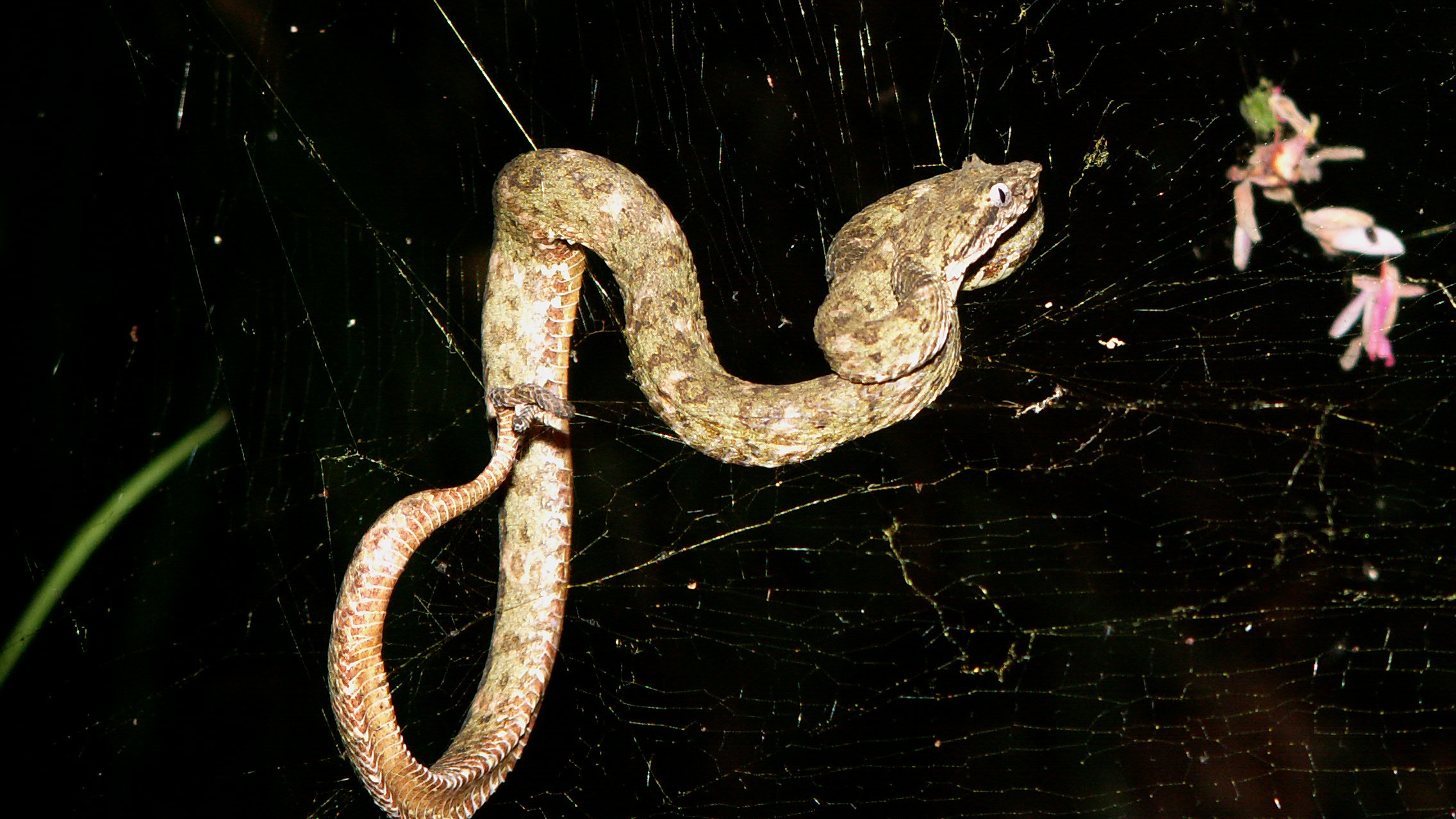
A very venomous eyelash viper (Bothriechis schlegelii) gets trapped in the web of a golden silk orb-weaver spider in Costa Rica. The snake is 15.7 inches (40 centimeters) long. Its venom will likely do little good in this situation; there are no recorded instances of a snake successfully biting and injecting venom into a spider.
Meal of a lifetime
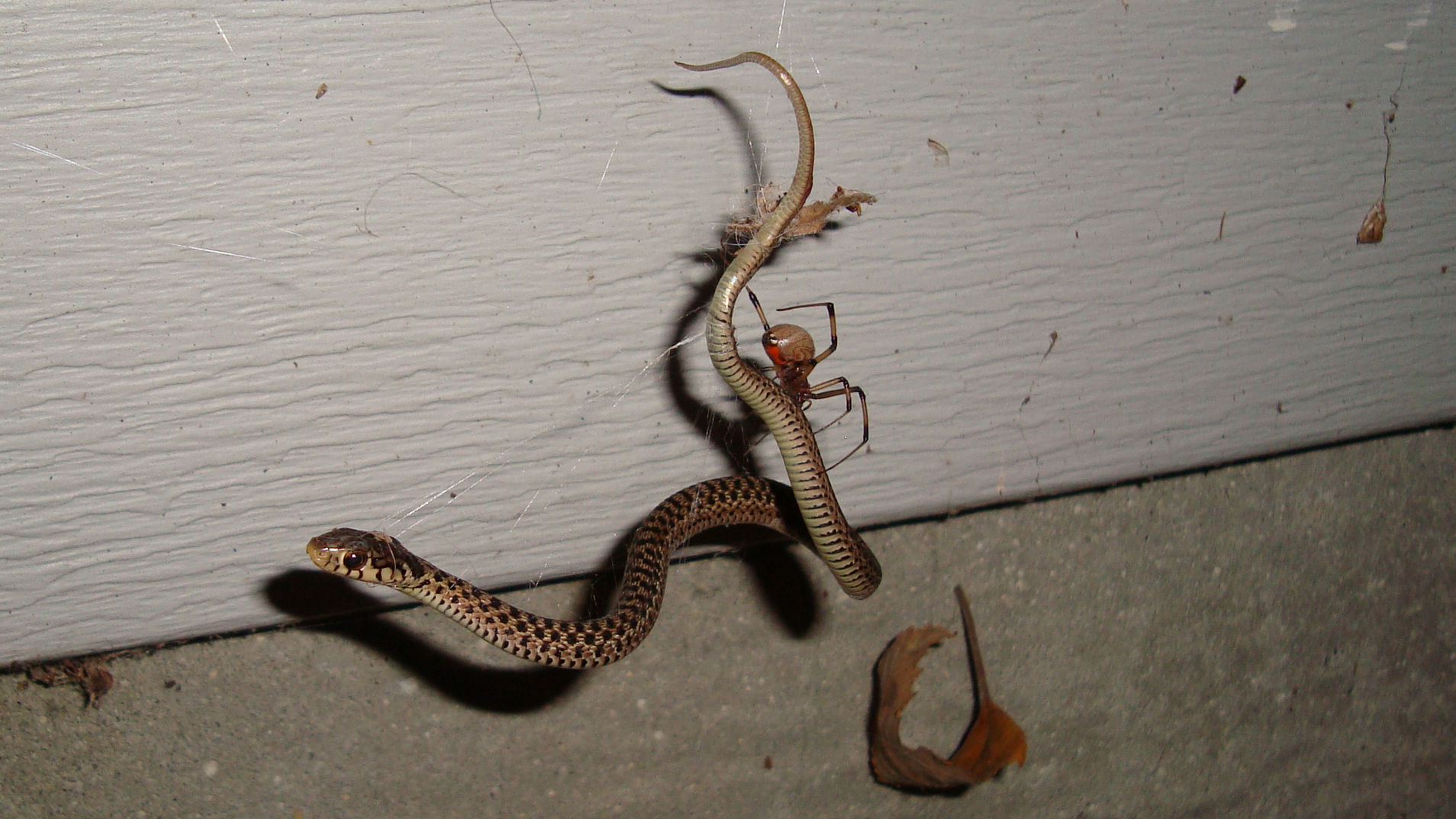
A young Eastern garter snake (Thamnophis sirtalis) finds itself in a bad situation in Douglas, Georgia. A brown widow (Latrodectus geometricus), meanwhile, prepares for the meal of a lifetime.
Tarantula v. snake
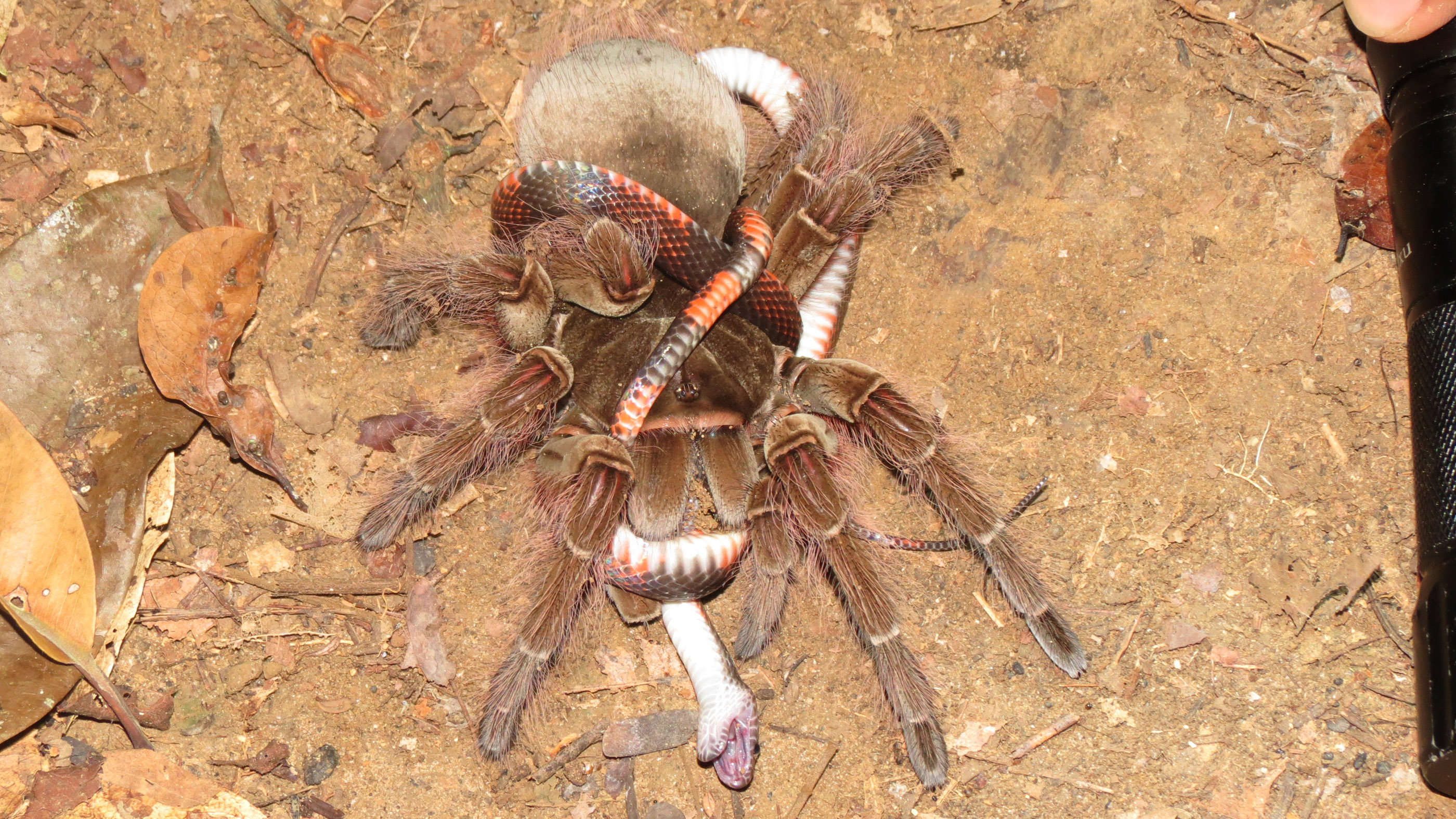
It's spider versus snake in the forest of the Pará state in Brazil. A tarantula (Theraphosa blondi) captures a juvenile false coral snake of the genus Oxyrhopus and carries it back to its burrow. Tarantulas don't weave webs, but rather they hunt prey on the ground or in trees.
Eating a baby snake
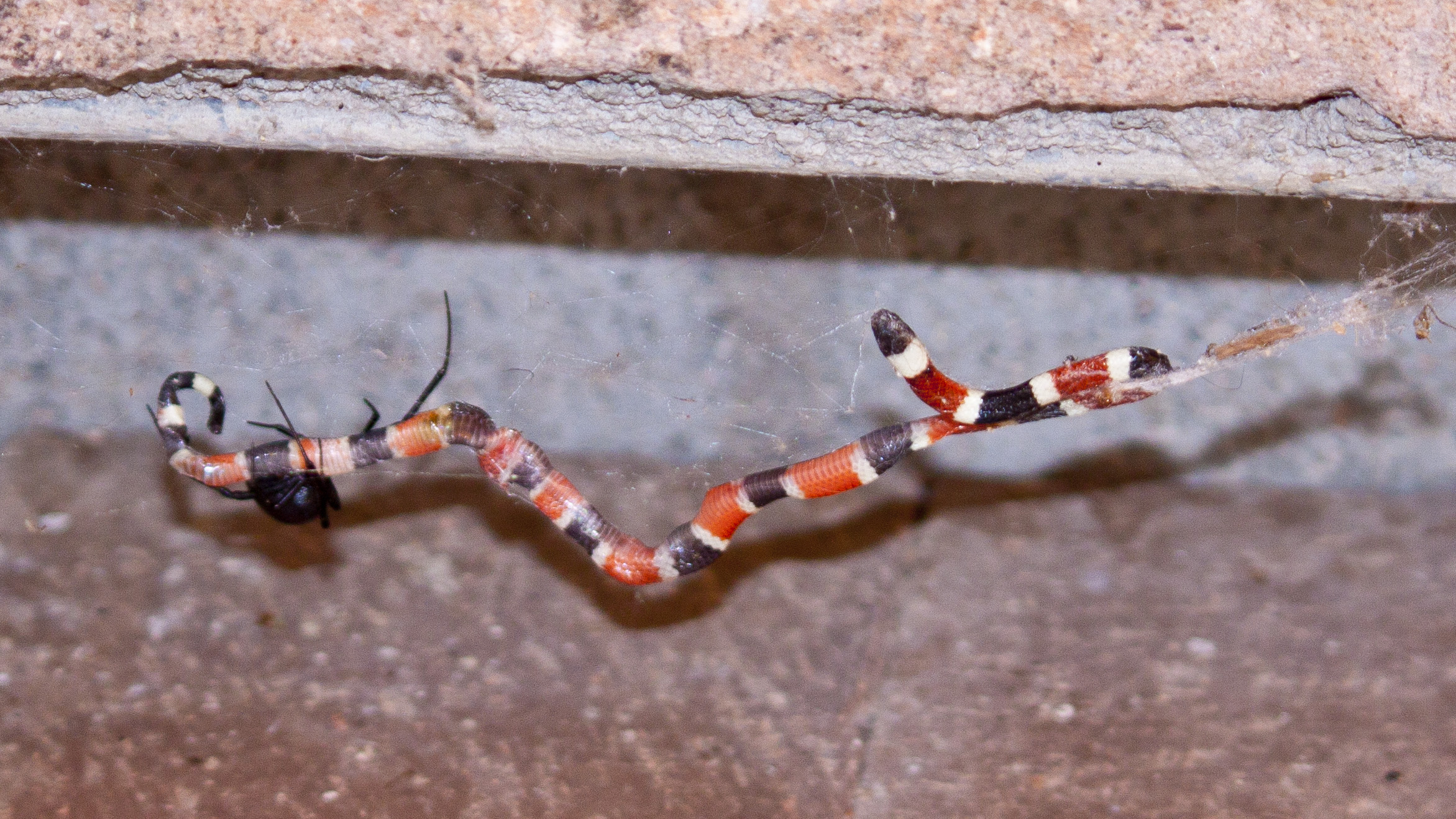
An adult female black widow (Latrodectus hesperus) feeds upon a young coral snake (Micruroides euryxanthus) near the Boyce Thompson Arboretum in Superior, Arizona. Most snakes successfully killed and eaten by spiders are babies or juveniles, though there are examples of snakes up to a meter long being taken.
Widows are wicked
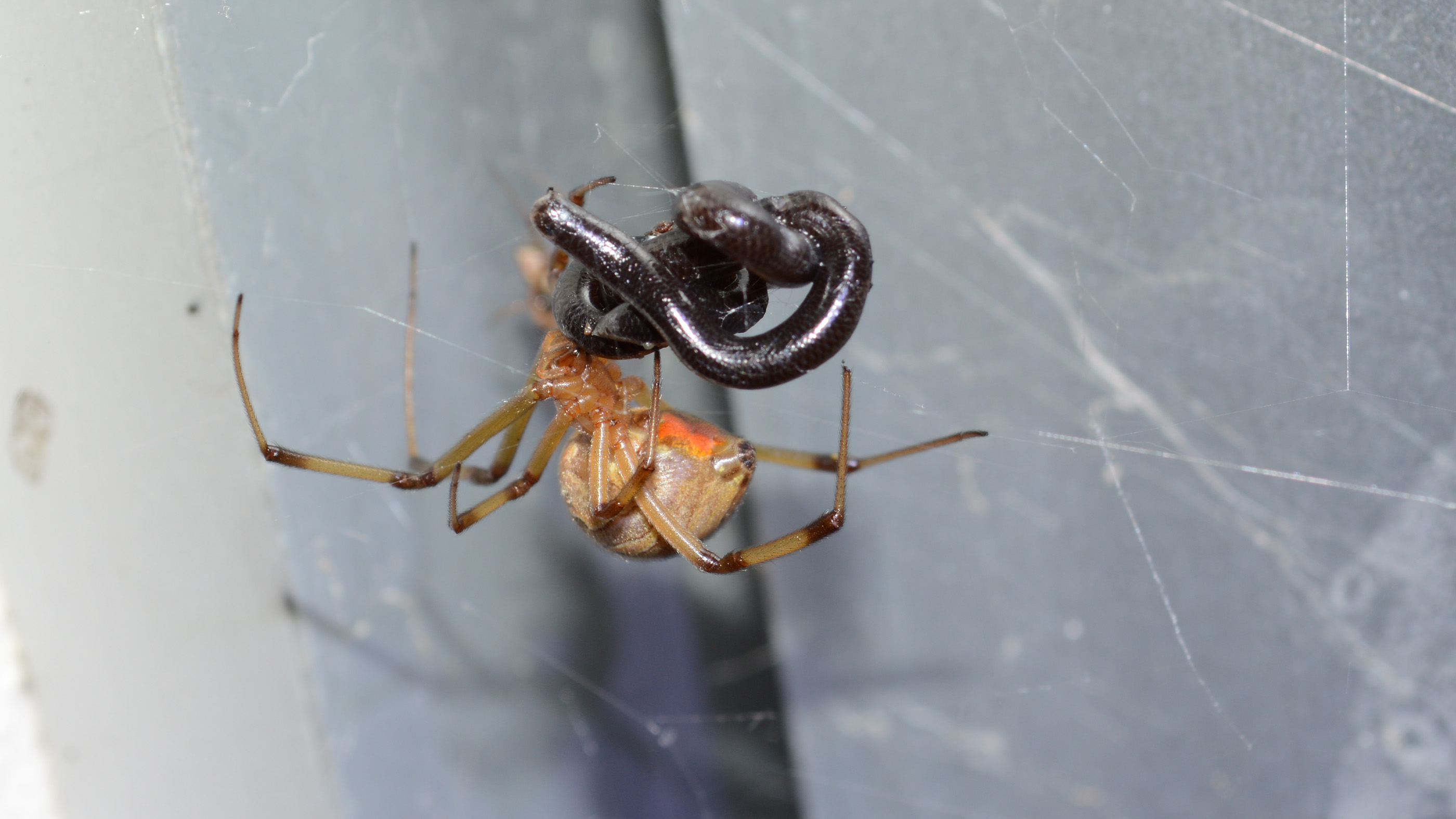
Widow spiders were responsible for about half of reports of spiders killing snakes. Here, a brown widow spider (Latrodectus geometricus) eats a Brahminy blindsnake (Indotyphlops braminus) in Zaachila, Oaxaca, Mexico.
Sign up for the Live Science daily newsletter now
Get the world’s most fascinating discoveries delivered straight to your inbox.
Goliath birdeater defeats vipter
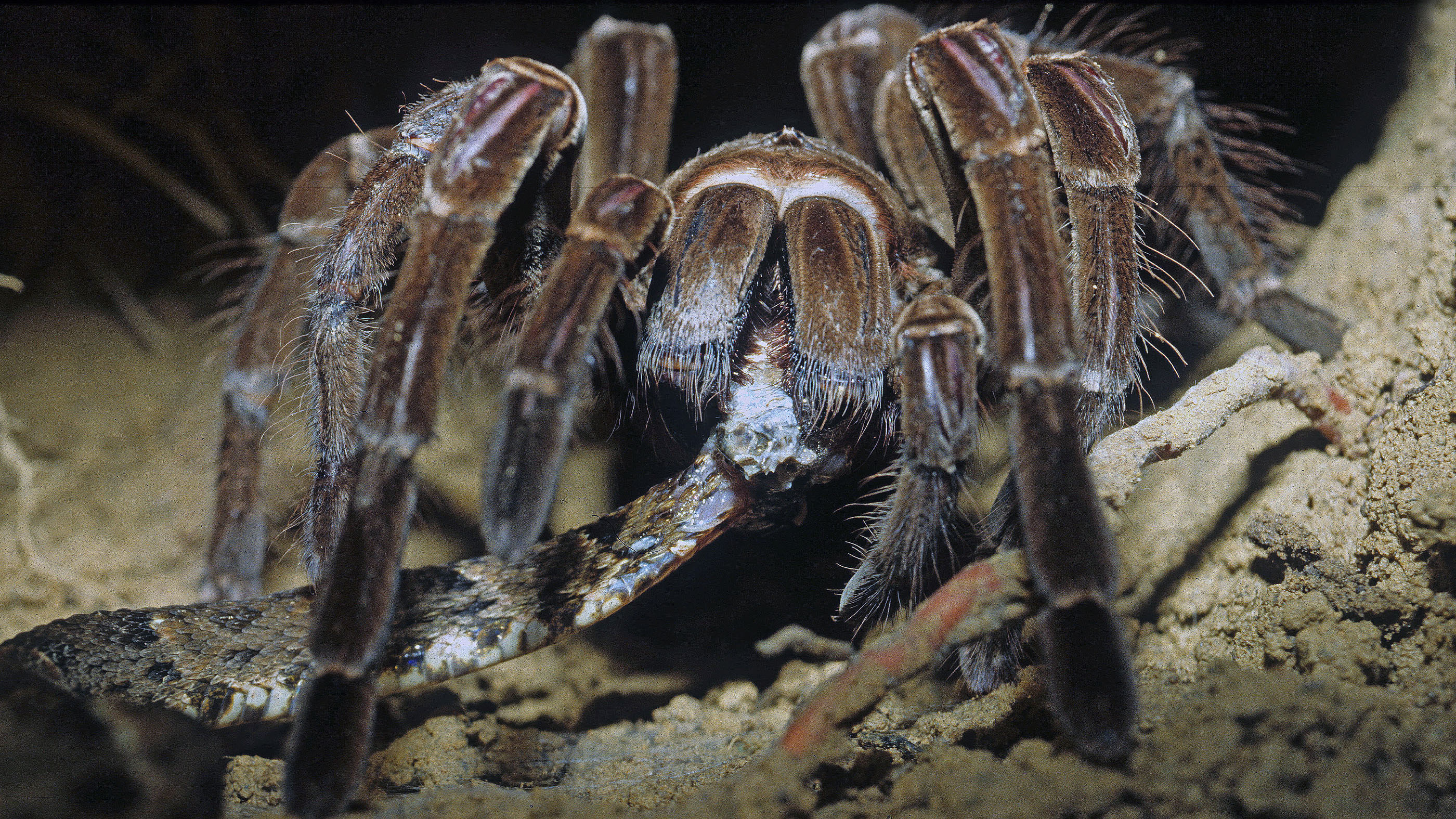
The fer-de-lance (Bothrops atrox) is a pit viper with venom deadly to humans. In this staged photograph taken in Venezuela, though, a tarantula called the Goliath birdeater (Theraphosa blondi) easily defeats and consumes the dangerous viper.
Porch fight
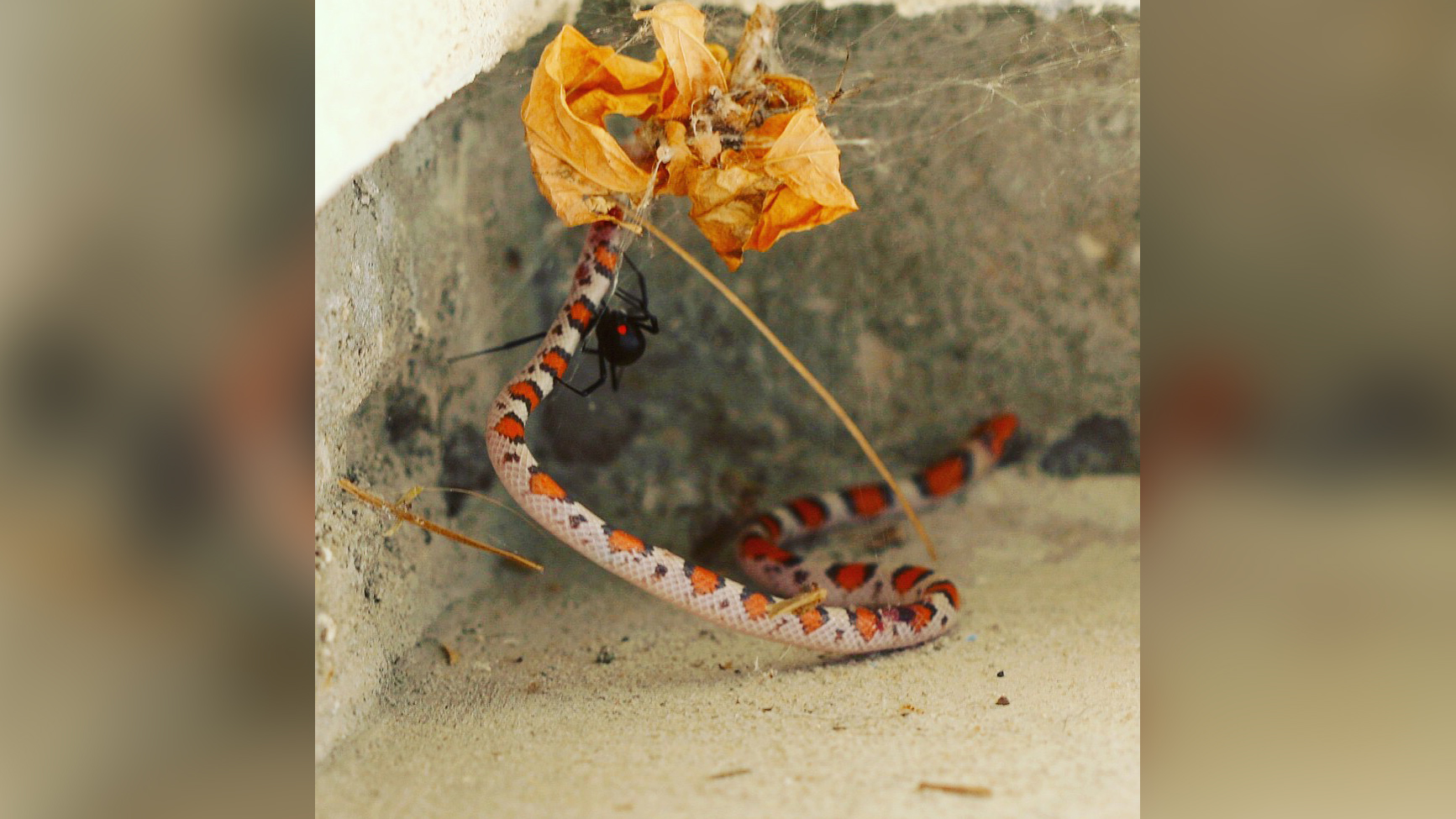
Spiders don't just prey on snakes in exotic, wild locales. This scarlet snake (Cemophora coccinea) met its fate in the corner of a front porch in Gulf Breeze, Florida, where a black widow had set up shop.
Originally published on Live Science.

Stephanie Pappas is a contributing writer for Live Science, covering topics ranging from geoscience to archaeology to the human brain and behavior. She was previously a senior writer for Live Science but is now a freelancer based in Denver, Colorado, and regularly contributes to Scientific American and The Monitor, the monthly magazine of the American Psychological Association. Stephanie received a bachelor's degree in psychology from the University of South Carolina and a graduate certificate in science communication from the University of California, Santa Cruz.










